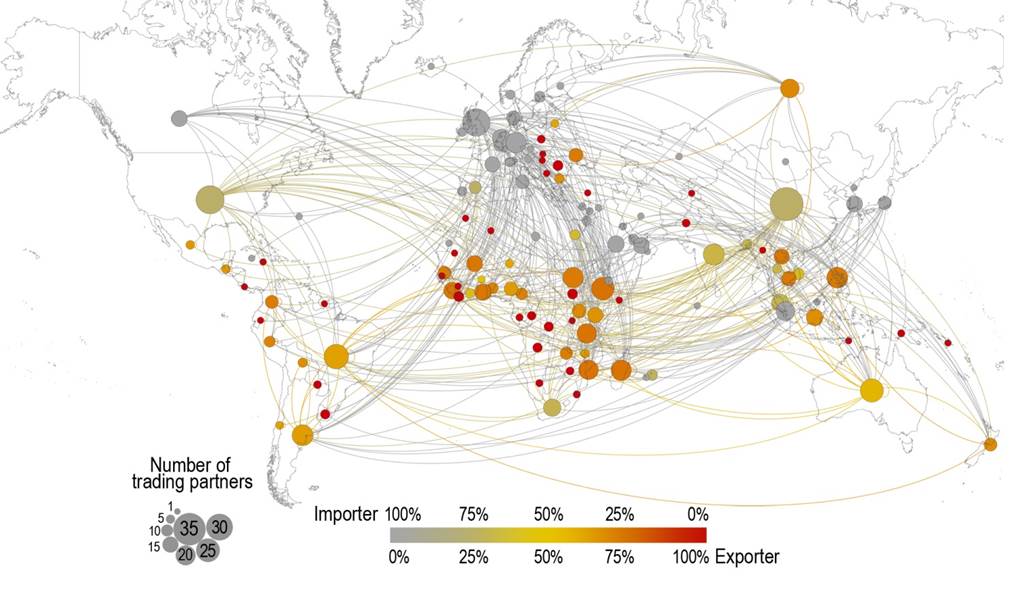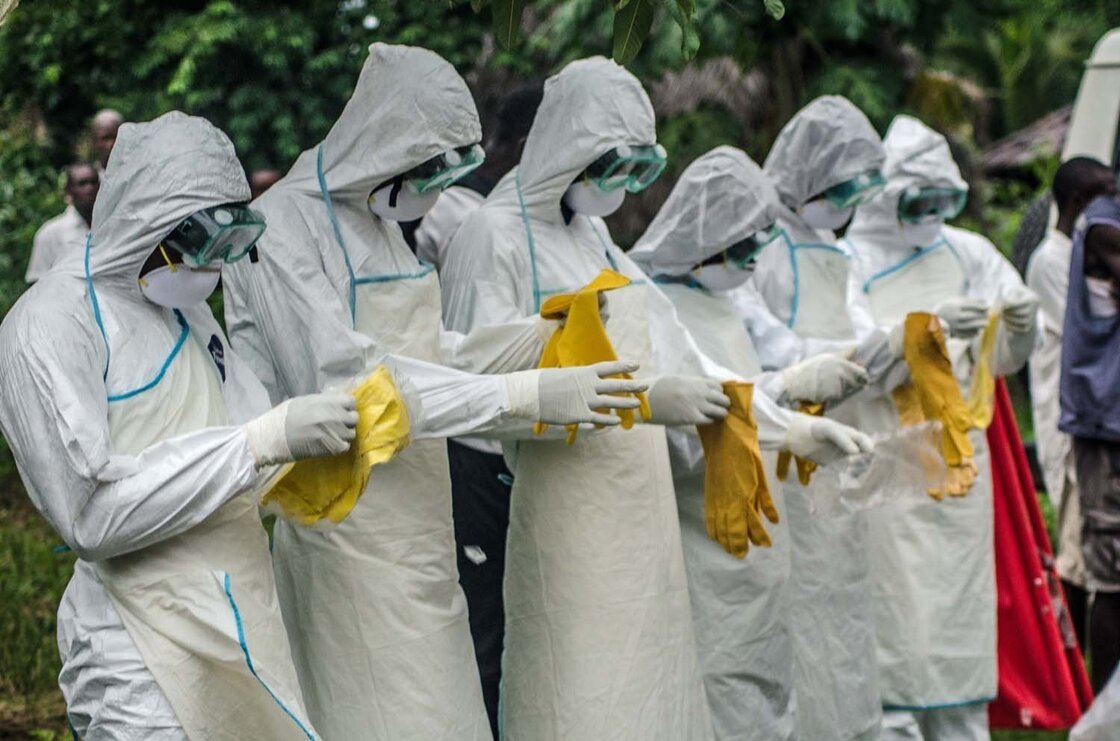Wednesday, August 29, 2018
Unparalleled Examples of Human Decency
By
CNu
at
August 29, 2018
0
comments
![]()
Labels: Deepening Contradictions , Farmer Brown , institutional deconstruction , necropolitics , predatory militarism , psychopathocracy , The Hardline , unspeakable , warsocialism
Friday, June 29, 2018
The Choice America Is Making Now
By
CNu
at
June 29, 2018
0
comments
![]()
Labels: Collapse Casualties , doesn't end well , Dystopian Now , Farmer Brown , Left Behind , musical chairs , Peak Capitalism , predatory militarism
Friday, September 08, 2017
Is the Moon the Creation of Intelligence?
Abandoning the traditional paths of "common sense", we have plunged into what may at first sight seem to be unbridled and irresponsible fantasy. But the more minutely we go into all the information gathered by man about the Moon, the more we are convinced that there is not a single fact to rule out our supposition.
The Vatican Secret Archives
By
CNu
at
September 08, 2017
0
comments
![]()
Labels: ancient , as above-so below , Farmer Brown , global system of 1% supremacy , History's Mysteries
Sunday, June 25, 2017
The Political Economy of Mass Incarceration
The Nixon campaign in 1968, and the Nixon White House after that, had two enemies: the antiwar left and black people. You understand what I’m saying? We knew we couldn’t make it illegal to be either against the war or black, but by getting the public to associate the hippies with marijuana and blacks with heroin, and then criminalizing both heavily, we could disrupt those communities. We could arrest their leaders, raid their homes, break up their meetings, and vilify them night after night on the evening news. Did we know we were lying about the drugs? Of course we did.
By
CNu
at
June 25, 2017
0
comments
![]()
Labels: American Original , Farmer Brown , Livestock Management , Naked Emperor , Peak Negro , political economy , Rule of Law , The Hardline
Race, Globalization, and the Politics of Exclusion
By
CNu
at
June 25, 2017
0
comments
![]()
Labels: American Original , doesn't end well , Farmer Brown , Livestock Management , musical chairs , political economy , Rule of Law , sum'n not right , The Hardline
Thursday, May 11, 2017
Those Controlling the Technology and Those Carrying Out the Tasks...,
By
CNu
at
May 11, 2017
0
comments
![]()
Labels: Collapse Casualties , debt slavery , Farmer Brown , global system of 1% supremacy , Hanson's Peak Capitalism , Livestock Management , parasitic , Pimphand Strong
Friday, March 24, 2017
The Battle for Healthcare in the U.S.
By
CNu
at
March 24, 2017
0
comments
![]()
Labels: .45 , Collapse Casualties , cultural darwinism , Farmer Brown , Livestock Management
Tuesday, February 28, 2017
Uber-Loving DNC Created Useless Class of Humans
“One of the most favored propaganda tactics of establishment elites and [those] they employ … is to relabel or redefine an opponent before they can solidly define themselves. In other words, elites [and their media] will seek to “brand” you (just as corporations use branding) in the minds of the masses so that they can take away your ability to define yourself as anything else.” (emphasis added)
By
CNu
at
February 28, 2017
0
comments
![]()
Labels: 2parties1ideology , agenda , Farmer Brown , Obamamandian Imperative , parasitic , partisan
Wednesday, December 14, 2016
He Who Controls the Spice Controls the Universe
By
CNu
at
December 14, 2016
0
comments
![]()
Labels: disintermediation , Farmer Brown , Hanson's Peak Capitalism , The Hardline
Tuesday, November 08, 2016
Privatizing Nature, Outsourcing Governance: The Economics of Extinction
To blame? Agriculture, fisheries, mining and other human activities. The report's authors predict that this figure will reach 67% by the end of the decade.
How on earth has this happened? The answer that's often put forward is that wildlife protection laws in the 'lawless' regions of the world (meaning large swathes of Africa and Asia) are woefully inadequate.
But the true root of the problem is that nature is being monetized in order to generate profits for investors and corporations in a process that's facilitated by changes in the structure of global governance - and it's about to get much worse.
Unless we get to grips with the real issues at stake, the destruction of nature is all-but guaranteed, except in those few parts of the world that are set aside as reserves for the enjoyment of wealthy visitors.
This money streams through mechanisms for cross-border accounting, tax evasion and the repatriation of profits that are designed and maintained by wealthy countries; facilitated by the institutional secrecy that is built into the global financial system; and controlled by corporate elites.
In a shadow economy that flows alongside the economy we see, commercial tax dodgers and criminals shift vast amounts of money across international borders quickly, easily and largely undetected. Hundreds of billions of dollars pour into western coffers each year, from both streams, leaving little behind for those whose lands and wildlife have been plundered.
By
CNu
at
November 08, 2016
0
comments
![]()
Labels: ecosystems , externalities , Farmer Brown , Irreplaceable Natural Material Resources , macrobiology
Tuesday, June 02, 2015
the global land-ownership network
This phenomenon of large-scale global land acquisitions, sometimes called “land grabbing,” is receiving increasing international attention because of its potential to contribute to development and raise yields in developing countries, but amidst concerns about local land rights and livelihoods.
One-third of countries both import and export land ownership. Of the 80 countries that export land ownership, most export to only a handful of trading partners, with a third having just one import partner. On the other hand, Ethiopia exports land to 21 different countries, and the Philippines and Madagascar both export land to 18 countries.
By
CNu
at
June 02, 2015
0
comments
![]()
Labels: Farmer Brown , food supply , food-powered , Livestock Management
macroscale musical chairs on the deck of the titanic...,
By
CNu
at
June 02, 2015
0
comments
![]()
Labels: Farmer Brown , food supply , Irreplaceable Natural Material Resources , Livestock Management
Saturday, October 18, 2014
the political economy of ebola
the resulting neoliberal economic policies sought to promote growth and prosperity through structural adjustment programs (SAPs) that generally involved contraction of government services, renewed export orientation on crops or goods deemed to have a comparative advantage, privatization of parastatal organizations, removal or reduction of many subsidies and tariffs, and currency devaluations.
By
CNu
at
October 18, 2014
0
comments
![]()
Labels: Collapse Crime , Farmer Brown , Irreplaceable Natural Material Resources , What IT DO Shawty...
Tuesday, September 16, 2014
patience..., vast land and resources coming soon in an equatorial region near you
In a worst-case hypothetical scenario, should the outbreak continue with recent trends, the case burden could gain an additional 77,181 to 277,124 cases by the end of 2014.
By
CNu
at
September 16, 2014
13
comments
![]()
Labels: cull-tech , Farmer Brown , resource war , What IT DO Shawty...
Tuesday, August 05, 2014
troubling truths behind the ebola outbreak
By
CNu
at
August 05, 2014
0
comments
![]()
Labels: cull-tech , Farmer Brown , information anarchy
Friday, August 01, 2014
ed, feed, august in chicago sounding better by the minute about now...,
By
CNu
at
August 01, 2014
9
comments
![]()
Labels: cull-tech , Farmer Brown , not a good look
Monday, December 02, 2013
from dust-to-dust...,
By
CNu
at
December 02, 2013
0
comments
![]()
Labels: ecosystems , Farmer Brown , food supply , microcosmos
Friday, September 27, 2013
35-YEAR-OLD US VETERAN: I AM ON FOOD STAMPS BECAUSE I ENJOY NOT STARVING
His letter depicts an America where ”normal” is military service families using food stamps to survive while the soldiers who serve America are busy fighting overseas… Shouldn’t these people, giving so much for their country, have at least enough to buy food for themselves and their families?
This is the reality of the GOP War on the Poor. Fist tap Dale.
By
CNu
at
September 27, 2013
2
comments
![]()
Labels: clampdown , Collapse Casualties , Farmer Brown , food-powered
bugs for slum-dwellers around the world...,
By
CNu
at
September 27, 2013
9
comments
![]()
Labels: clampdown , Farmer Brown , food
DEI Is Dumbasses With No Idea That They're Dumb
Tucker Carlson about Alexandria Ocasio-Cortez and Karine Jean-Pierre: "The marriage of ineptitude and high self-esteem is really the ma...
-
theatlantic | The Ku Klux Klan, Ronald Reagan, and, for most of its history, the NRA all worked to control guns. The Founding Fathers...
-
Video - John Marco Allegro in an interview with Van Kooten & De Bie. TSMATC | Describing the growth of the mushroom ( boletos), P...
-
Farmer Scrub | We've just completed one full year of weighing and recording everything we harvest from the yard. I've uploaded a s...






